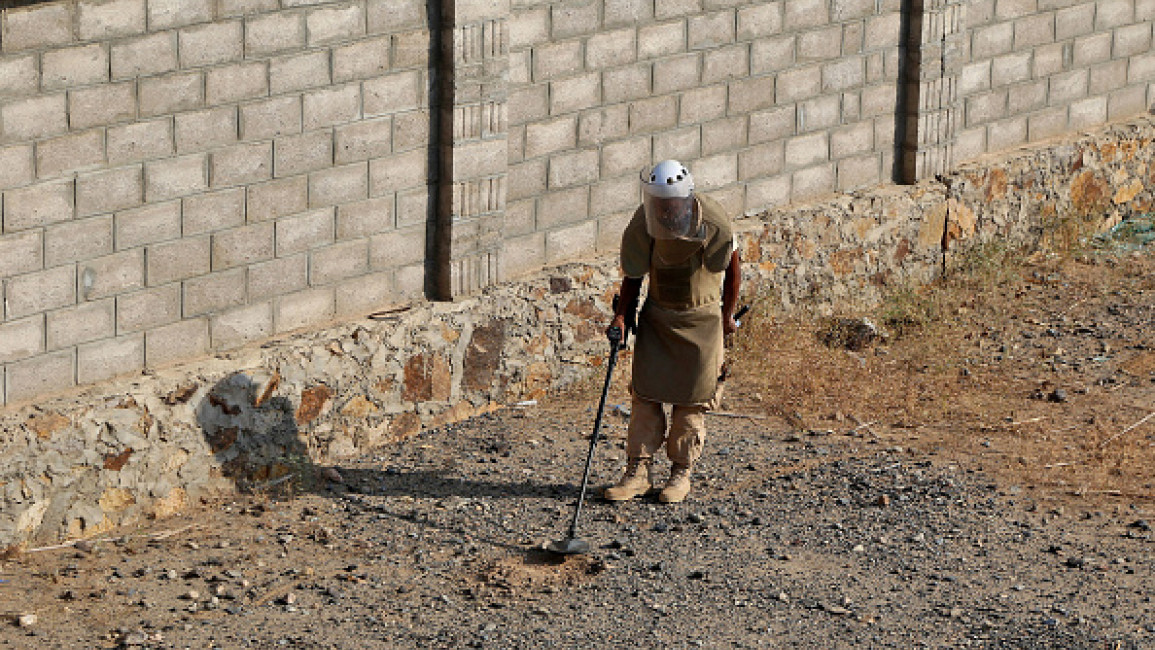Yemen's explosives contamination among world's worst: ICRC
Yemen has one of the world's highest rates of contamination with landmines and other deadly explosives, the International Committee of the Red Cross has warned, nine years after the start of the brutal civil war.
The impoverished Arab nation, plunged into conflict when Iran-backed Houthi rebels seized the capital in September 2014, is among the three worst affected countries, the ICRC said.
Experts estimate that at least one million mines have been planted during Yemen's years of turmoil, causing a daily hazard along with unexploded shells and other military detritus.
"When it comes to weapon contamination, with Afghanistan and Iraq, Yemen is among the three countries most affected by this," Fabrizio Carboni, the ICRC's Near and Middle East regional director, told AFP.
"It is really devastating and has a very important impact on people, their safety, and also their livelihood."
A Saudi-led military coalition has been fighting the Houthis since March 2015 in a conflict that has left hundreds of thousands dead from direct and indirect causes such as famine.
According to the UN-linked Civilian Impact Monitoring Project, landmines, unexploded shells and other leftovers from fighting caused 1,469 civilian casualties over the past five years.
"The presence of unexploded ordnance is just massive," said Carboni.
Twenty percent of livestock owners living in two areas close to frontlines reported explosives contamination on their land, the ICRC found after conducting a series of interviews last year.
Another ICRC survey of shepherds found that 70 percent had lost animals to landmines and other explosives.
"The contamination is so important and widespread that you won't be in a position to decontaminate everything," even if the conflict ended today, Carboni said.
"Almost half of all landmine and explosive remnants of war incidents involving children were deadly"
— The New Arab (@The_NewArab) April 6, 2023
One child killed or injured by landmines every two days in Yemen
✍ Shehrazade Shams https://t.co/OqyfEUNtDz
Fighting in Yemen has calmed markedly after a UN-brokered ceasefire came into effect in April 2022 and has largely held even after the agreement lapsed in October 2022.
A Chinese-brokered rapprochement between regional powers Iran and Saudi Arabia, eight years after they broke off ties, has also sparked hope for Yemen.
"This is the first time that I really feel that there are convincing, concrete political options on the table and that violence and conflict is not anymore the only option," Carboni said.
But even if peace prevails, clearing the land of explosives would take many years, he said, adding that it would require resources, expertise and machinery.
"We are talking about, maybe, decades. But again, it's a matter of resources," he said.
"Today, we inform, we train," Carboni added.
"We have sessions with communities where we inform them about the risks related to unexploded ordnance, or if they find remnants of war... they have to inform us so we can organise (clearance) with the various authorities and partners.
"That's quite new for us."
The ICRC is also putting renewed effort into identifying and returning the remains of fighters who have died on each side, Carboni said.
"There are many dead bodies that were left and we really want to work with all parties of this conflict to put more energy and drive into this file," he said.
"We're investing in forensic, we're investing in trying to put all parties around the table."
In May, the rebels and government forces exchanged the corpses of 43 fighters, the largest such handover so far. A month earlier, they had freed nearly 900 detainees.
In its effort to help Yemen deal with the impacts of its brutal war, said Carboni, "we want to be optimistic but, at the very same time, we don't want to be naive".



